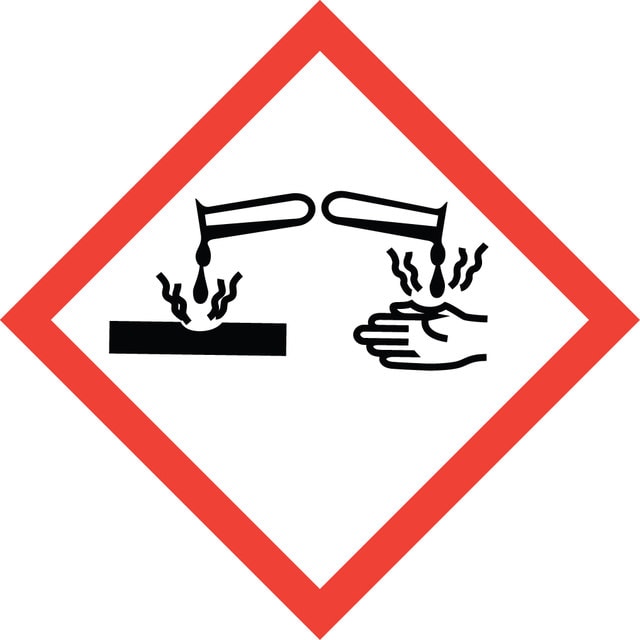Select a Size
About This Item
Assay
≥99.9% trace metals basis
form
crystals and lumps
composition
Au, 48.5-50.25%
reaction suitability
core: gold
packaging
glass bottle of 1 g
glass bottle of 25 g
glass bottle of 5 g
impurities
≤1000.0 ppm Trace Metal Analysis
application(s)
PEM fuel cells
homogeneous catalyst
material synthesis precursor
SMILES string
Cl[H].[H]O[H].[H]O[H].[H]O[H].Cl[Au](Cl)Cl
InChI
1S/Au.4ClH.3H2O/h;4*1H;3*1H2/q+3;;;;;;;/p-3
InChI key
XYYVDQWGDNRQDA-UHFFFAOYSA-K
Looking for similar products? Visit Product Comparison Guide
General description
Application
Features and Benefits
- Tested with ICP-Mass for confirming the requirements of purity and trace metal analysis ( =< 1000.0 ppm).
- Low insoluble matter (=< 0.1 %) of the product and high purity is very reliable for R&D applications
- Gold % is in the range of 48.50 - 50.25 %
Signal Word
Danger
Hazard Statements
Precautionary Statements
Hazard Classifications
Acute Tox. 4 Oral - Aquatic Chronic 2 - Eye Dam. 1 - Met. Corr. 1 - Skin Corr. 1B - STOT RE 2 Oral
Target Organs
Kidney
Storage Class Code
8B - Non-combustible corrosive hazardous materials
WGK
WGK 3
Flash Point(F)
Not applicable
Flash Point(C)
Not applicable
Personal Protective Equipment
Choose from one of the most recent versions:
Already Own This Product?
Find documentation for the products that you have recently purchased in the Document Library.
Which document(s) contains shelf-life or expiration date information for a given product?
If available for a given product, the recommended re-test date or the expiration date can be found on the Certificate of Analysis.
How do I get lot-specific information or a Certificate of Analysis?
The lot specific COA document can be found by entering the lot number above under the "Documents" section.
What is Gold (III) chloride trihydrate, Product 520918, soluble in?
Gold (III) chloride trihydrate is very soluble in water and polar organic solvents.
What is the melting point of Gold (III) chloride trihydrate, Product 520918?
This product has a melting point of 50 deg C, please note that it will decompose at this temperature.
How should Gold (III) chloride trihydrate, Product 520918, be stored?
We would recommend storing this at room temperature in accordance with our MSDS. This product is light and moisture sensitive so in order to prolong the life of the product it should be stored under inert gas and the bottle should be wrapped in aluminum foil or stored in a dark place.
How do I find price and availability?
There are several ways to find pricing and availability for our products. Once you log onto our website, you will find the price and availability displayed on the product detail page. You can contact any of our Customer Sales and Service offices to receive a quote. USA customers: 1-800-325-3010 or view local office numbers.
What is the Department of Transportation shipping information for this product?
Transportation information can be found in Section 14 of the product's (M)SDS.To access the shipping information for this material, use the link on the product detail page for the product.
My question is not addressed here, how can I contact Technical Service for assistance?
Ask a Scientist here.
Articles
Solvothermal synthesis of nanoparticles: applications from nanocircuits and nano-optical circuits to nanomagnetics and biotech.
Plasmonic nanoparticles have unique optical properties that can be tailored to suit a variety of applications in the biotechnology1–8 and electronics9–16 industries.
纳米颗粒的溶剂热合成:从纳米电路、纳米光学电路到纳米磁学和生物技术应用。
Related Content
Products and support for mpox research, offering world-class reagents for immunoassay and molecular assay development.
Our team of scientists has experience in all areas of research including Life Science, Material Science, Chemical Synthesis, Chromatography, Analytical and many others.
Contact Technical Service


